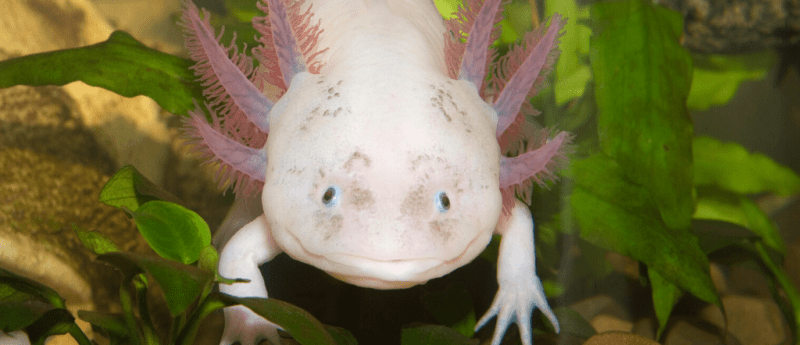Regeneration genes identified in axolotls

Researchers have utilized CRISPR to identify two key genes involves in regeneration within the axolotl.
Utilizing a multi-step CRISPR-Cas9 screen, researchers from Yale University (CT, USA) have identified two genes within the complex axolotl genome that seem to play an important role in limb regeneration. The study, published in eLife, has overcome the limitations imposed by the size and repetitious areas of the axolotls’ genome to identify the genes through a novel platform, combining CRISPR and fluorescent chimeras.
While some level of regeneration is present in most animals, axolotls possess one of the most extensive capabilities, regenerating a range of tissues, including major organs and limbs, and many believe that the animals may help unlock the ability to regenerate large wounds. The researchers from Yale University have tracked 25 genes that are believed to be involved in the process, identifying two genes as having a considerable role in partial regeneration of the axolotl limb.
“It regenerates almost anything after almost any injury that doesn’t kill it,” commented Parker Flowers (Yale University), one of the authors of the paper.
Combining RFP+ haploid CRISPR-edited embryos and GFP+ embryos into single chimeras, researchers were able to identify the vital genes by looking for those cells that were negatively selected against in the regenerating limb. Having chosen to knock out genes highly prevalent within the blastema — the structure of dedifferentiated cells that forms at the site of injury — the team were able to assess the necessity of each gene for the regenerative process.
Two genes were identified by the study: catalase and fetub. Catalase is a conserved protein involved in the regulation of reactive oxygen species; a substance known to influence regeneration. Meanwhile, fetub paralogues have more complicated biological roles and are involved in a range of processes, such as being expressed within the chondrocytes at the growth plates.
The next stage for the team appears to be to apply their system to other areas of the axolotl body, to discern the genes vital for organ regeneration.
Sources: Sanor L, Flowers GP, Crews C, Multiplex CRISPR/Cas screen in regenerating haploid limbs of chimeric axolotls. eLife. doi:10.7554/eLife.48511 (2020) (Epub ahead of print); https://news.yale.edu/2020/01/28/tiny-salamanders-huge-genome-may-harbor-secrets-regeneration
Have any additional questions about this story? Ask us in the comments, below.
Find out more in these top picks from the Editor:
- Study finds immune system is critical to regeneration
- Regenerative medicine in lower limb reconstruction
- Seeking the genetic instruction manual for limb regeneration & wound healing